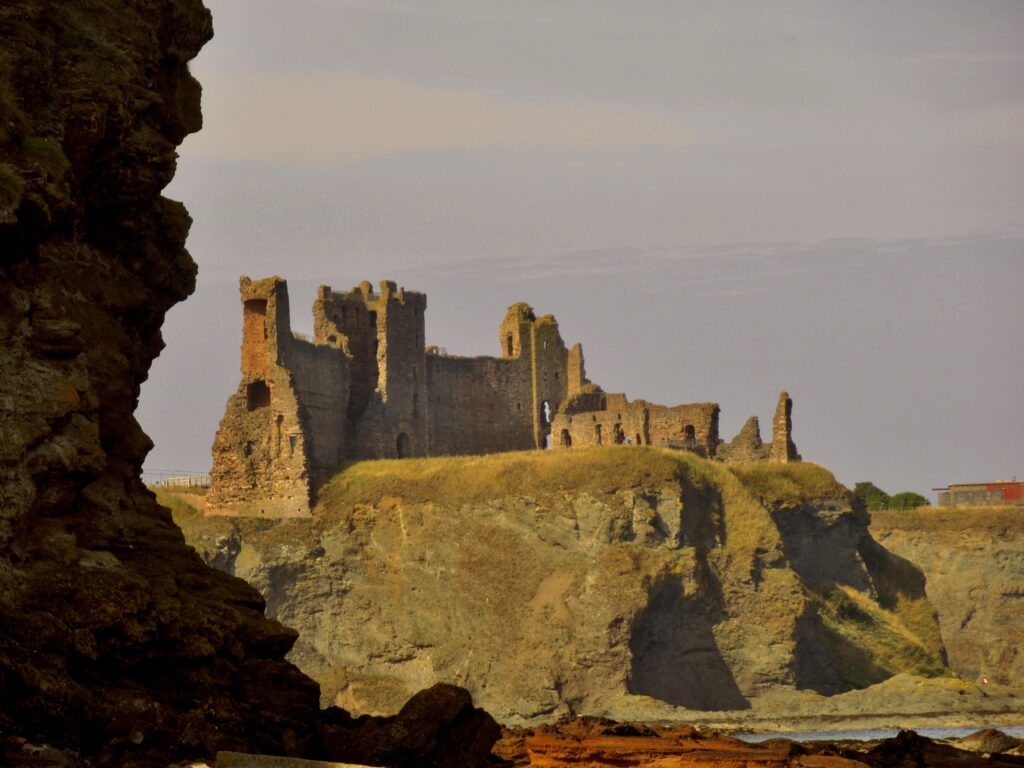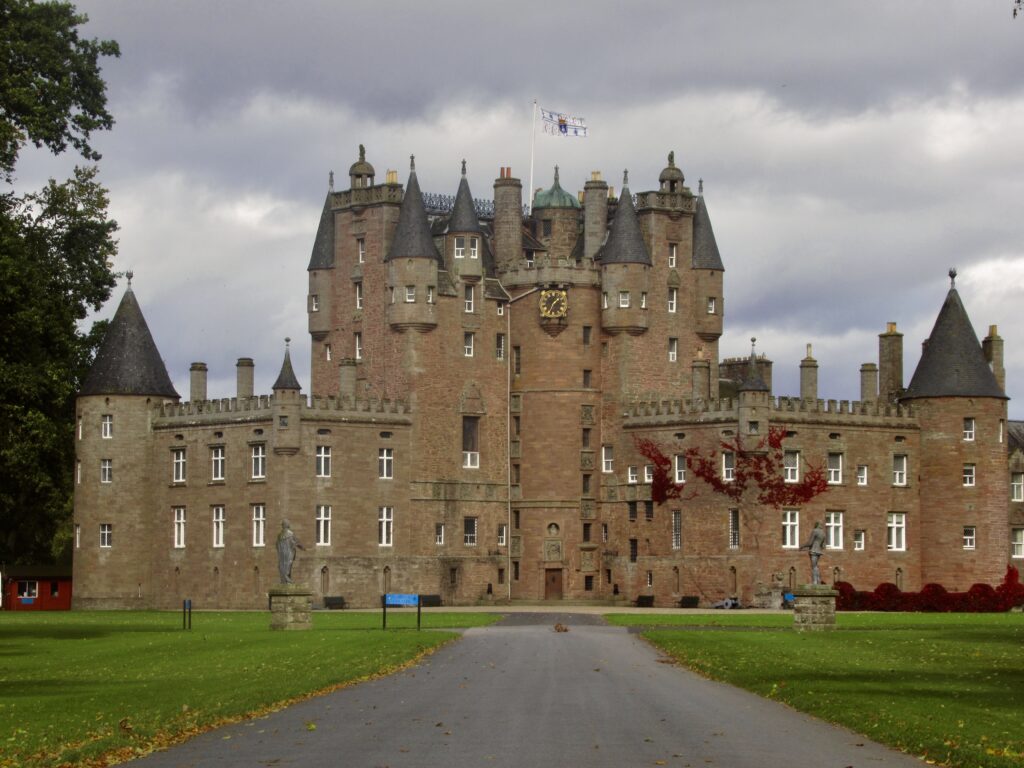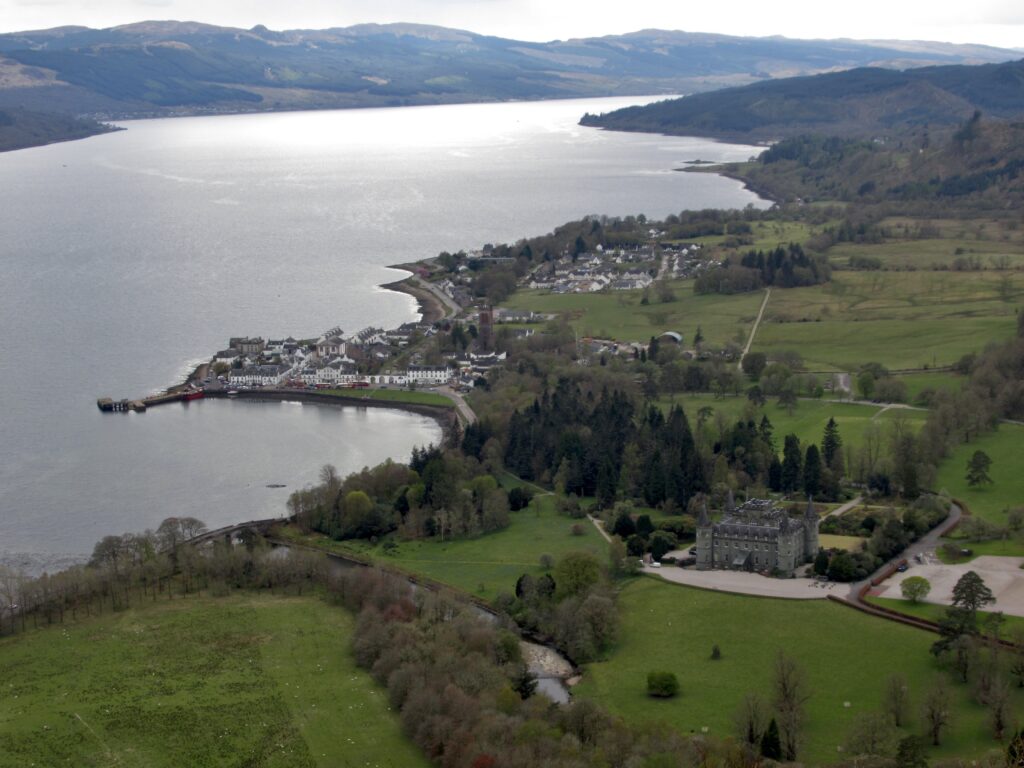7 Most Beautiful Castles in Scotland
Scotland is renowned for its breathtaking and magical castles, each with its own captivating story to tell. In this blog post, we invite you to join us on a journey to uncover our selection of the seven best castles in Scotland. From ancient ruins nestled amidst rugged landscapes, cliffs, and misty moors to fairytale-like mansions still proudly owned by Clan chiefs, these castles not only enchant with their beauty but also stand as crucial witnesses to Scotland’s extraordinary history.
Prepare to embark on an adventure as we delve into these magnificent citadels, where tales of courage, love, and enduring heritage resonate through the ages. Whether you’re a history enthusiast, a photography buff, or simply eager to experience the magic of touring castles, these Scottish treasures await your exploration.
Kilchurn Castle
The eerie, moody and magical ruins of Kilchurn Castle are utterly captivating. If it wasn’t special enough then close your eyes and imagine what it used to be like. The fortress sitting alone completely surrounded by water and only accessible by either the hidden causeway to its east or by boat. We don’t see this today because in 1817 the depth of Loch Awe was substantially lowered as the outflow into the River Awe was cleared to build what is now the A85.
Kilchurn Castle finds its roots in the year 1440, when Margaret Campbell embarked on its construction for her beloved, Sir Colin Campbell. Sir Colin, a valiant knight preparing for the Crusades in Rhodes, left behind a token of his love: a ring broken in two, with each holding a part. He entrusted Margaret with a solemn pledge, urging her to believe in his death only when she held his half of the ring.
Yet, after he was gone Lady Margaret’s resolve was tested by the cunning interference of Baron MacCorquadale, who intercepted all Sir Colin’s letters and sought to persuade her that he had perished and would never return. Over time, Margaret succumbed to doubt, entertaining the notion of moving on and consenting to marry another suitor. Despite this, she postponed the nuptials until the towerhouse of the castle was completed.
Eventually the day of the wedding arrived, and fate intervened. Sir Colin, mounted on horseback, emerged to confront the proceedings, brandishing his portion of the ring calling off the ceremony and reaffirming their bond. His timely arrival dispelled all uncertainties, halting the ceremony and reigniting the flame of their enduring love.

Kilchurn Castle
Tantallon Castle
Tantallon is the first of two dramatic castle ruins that I have selected which are situated on the rugged coastal cliffs. This architectural marvel, erected around 1400 by Robert, Duke of Albany, showcases a mastery focused on impregnability. Leveraging natural cliffs and nature’s force on three sides, the castle became virtually impregnable. Fortification was reserved for the land-facing side, deeming the sea approach impractical for invaders. The entrance featured a drawbridge over a ditch and a winding road, strategically exposing intruders to the castle’s defensive might.
Robert, Duke of Albany, assumed governance of Scotland over his politically and physically weak brother, King Robert III. Albany’s ambitions, however, interrupted the succession plans. Holding King Robert’s eldest son in Falkland Palace, where we died (or was murdered) under mysterious circumstances. In response, King Robert III sent his youngest child, future King James I, out of the country to protect him from Albany’s influence. However, disaster struck James was kidnapped by the English, who demanded a ransom. But instead of paying the ransom the Duke was happy to sit as the ruler of the kingdom with no political threat. So James remained a prisoner stayed for 18 years.
Upon Albany’s death at the age of 80, his son Murdoch became regent. Political pressure eventually forced him to pay the ransom of the captive King James. Within half a year into his reign James started to plot his revenge. He seized Albany’s castles of Tantallon and Doune and subsequently sentenced him and his two sons with treason charges. Resulting in their beheading on Heading Hill in Stirling. These castles remained in the possession of successive Kings until 1479 when Tantallon was granted to Archibald Douglas, the fifth Earl of Angus.
On a more uplifting note, feast your eyes on the breathtaking Tantallon Castle in the photo below, captured from Seacliff Beach. When viewing the castle from its frontal vantage point, an entirely different spectacle unfolds, showcasing Bass Rock in the distance. This majestic island appears white from late February to October, due to the arrival of approximately 150,000 northern gannets, forming the world’s largest colony.
The profusion of seabirds not only creates a breathtaking sight but also signifies an abundance of fish, attracting seals and dolphins. This, in turn, offers abundant opportunities for spotting these marine wonders. If you have a keen interest in Scotland’s rich bird life or wildlife, delve into our blogs or consider reaching out for a bespoke Scotland wildlife tour.

Tantallon Castle
Dunnottar Castle
Perched majestically along Scotland’s northeast coast, Dunnottar Castle stands as an emblem of resilience and intrigue, beckoning travelers from afar to behold its breathtaking ruins. Against the rugged cliffs, its silhouette commands attention, a testament to centuries of history and legends woven into its very stones. As crashing waves echo against the coastline, and the salty sea breeze fills the air, visitors are transported through time, immersed in the sensory richness of Dunnottar’s surroundings.
The allure of Dunnottar extends beyond its imposing walls, reaching back through millennia of human history. Archaeological discoveries trace the area’s heritage to ancient times, with evidence of Pictish settlements dating back to 5000 BC, including the remnants of what is believed to be the oldest Pictish fort atop the nearby sea stack of Dunnicaer.
In the footsteps of ancient worshippers, St. Ninian established Dunnottar as a spiritual sanctuary around 400 AD, laying the foundation for its evolution into a formidable fortress in the centuries to come. The castle was battered by Viking invasions and endured multiple sieges during Scotland’s wars for independence, Dunnottar Castle emerged as a symbol of strength and resilience, its significance etched into the history of Scotland.
Yet perhaps its most renowned chapter unfolds during the turbulent years of Oliver Cromwell’s rule, where Dunnottar’s impregnable walls sheltered the priceless Scottish Crown jewels. After months of war the Crown Jewels were guided by the cunning wit of Christine Fletcher who smuggled them out and hid them under the floorboards of Kinneff Church, where they were safeguarded until the restoration of Charles’s reign. The legacy of Dunnottar Castle, intertwined with tales of bravery and intrigue, continues to captivate hearts and minds, ensuring its place as a cherished jewel of Scotland’s heritage.
A visit to Dunnottar Castle offers more than just a glimpse into the past; it presents an opportunity to witness spectacular sunrises, a sight to behold for early risers.

Dunnottar Castle
Eilean Donan Castle
The views of Eilean Donan Castle are nothing short of spectacular. Surrounded by three intersecting lochs, beautiful mountains and sitting on the main road to the Isle of Skye. You can see why the castle’s popularity rose to fame faster than Lewis Capaldi.
Rooted in ancient history, the castle gets it name from St. Donan, an Irish missionary who arrived in Scotland circa 580 AD and established a monastery on the island. However, it was in the 13th century that the lands transitioned to Farquhar II, courtesy of King Alexander, who erected defensive structures to ward off Viking invasions.
Five hundred years later, in 1719, the castle hosted a Jacobite fiasco in what was a dramatic turn of events. Two Spanish armadas set sail from Cadiz in support of the Jacobite cause, one bound for England and the other, though smaller, aimed for the Isle of Lewis. However, fate intervened as the first armada was battered by a fierce storm, never reaching its intended destination. Meanwhile, the second armada joined forces with the Earl of Marischal, George Keith, with plans to establish a stronghold at Eilean Donan before marching to Inverness to unite with fellow Jacobite Clansmen.
Yet, news arrived that the other armada, consisting of 5,000 soldiers, had failed to reach England. With England’s undivided attention now focused on quelling the rebellion, the march to Inverness was abruptly canceled. By May 10th, Royal Navy ships descended upon Loch Alsh, unleashing a relentless bombardment on the castle for three consecutive days. Facing overwhelming force, the Spanish soldiers surrendered. Subsequently, government troops seized control of the castle, discovering a cache of 343 barrels of gunpowder hidden within its walls, which they ruthlessly detonated, reducing the fortress to rubble.
For nearly two centuries, the castle sulked, its once-majestic form reduced to crumbling ruins. Then, in 1912, Colonel John MacRae-Gilstrap intervened, acquiring the island and embarking on a monumental restoration effort that spanned two decades. Through his dedication and vision, the castle was resurrected to its former glory.
Today, it stands as one of Scotland’s most iconic landmarks, earning the distinction of being the most photographed castle in the country. As well as featuring in films and TV shows such as Highlander and James Bond: The World Is Not Enough.
To delve deeper into the castle’s haunting history and intriguing tales and to see this marvel with your own eyes join us on our Isle of Skye itineraries.

Eilean Donan Castle
Captivated by Scotland’s Castles and want to experience them with your own eyes ?
Glamis Castle
Glamis Castle boasts a truly majestic entrance, with a long, straight road flanked by majestic trees, creating a captivating avenue leading to the castle’s grand facade. However, beneath its enchanting exterior lies ghostly tales, adding an intriguing layer to its storied history. One of the most famous ones is the “Gray Lady” the ghost of Janet Douglas, wife of John, 6th Lord Glamis.
King James V had a deep-seated animosity towards the Douglas Clan stemming from the fact that he had been completely dominated by his Douglas stepfather and manipulated by other members of the family. Janet, after the death of her first husband, married Archibald Campbell of Skipness and brought him to live at Glamis. But James had been waging a ruthless vendetta against the Douglas Clan.
In a display of vindictive spite, James accused her of attempting to assassinate him through poison and sorcery. Arrested she was taken to Edinburgh where on 17th July 1537, she was led up to Castle Hill, where she faced a gruesome execution. Chained to a stake surrounded by kindled firewood and tarred barrels, she met her tragic end in a blaze of flames. All witnessed by her husband and son .
Yet, her spirit endures, often manifesting in the castle’s chapel, where she is seen kneeling in silent prayer. A figure, shimmering and translucent, she radiates an aura of serene tranquility before fading into nothingness, leaving behind only whispers of her ghostly presence.

Glamis Castle
Castle Stalker
Does this castle look awfully familiar to you? If you’re reminded of The Castle Aargh from Monty Python and the Holy Grail, your memory serves you well!
Castle Stalcair, the castle of the hunter, stands as an iconic landmark on an island on the picturesque Western shores of Argyll. Tradition has it that its name relates back to the days when James IV often visited Stewart of Appin, a trusted companion, for hunting expeditions.
Throughout its storied history, Castle Stalker has exchanged hands between the Stewart family and the Campbells numerous times. One such exchange, involves the 7th chief of Appin, young Duncan known as ‘Baothaire’ (meaning weak-minded), who had drank a whisky or six too many and tragically traded the castle for an eight-oared galley with Donald Campbell of Ardmurchan. A deal that Harry Redknapp wouldn’t be proud of.
This castle has became a little bit of a farce to visit over the years as parking has become more and more restricted. However, the experience is undeniably worthwhile, and guided tours are available. For the best access, head to the Castle Stalker View Cafe and either enjoy the vista or walk down from there. Sunset is the ideal time to visit, as the castle and its surroundings are bathed in the golden light of dusk, offering breathtaking views that are truly unforgettable.

Castle Stalker
Inveraray Castle
Inveraray Castle stands as a splendid mansion, proudly serving as the current abode of Torquhil Campbell, the Campbell Chief and 13th Duke of Argyll.
The illustrious lineage of the Campbells traces back to Cailein Mor (Colin the Great), who once commanded the stronghold of Innis Chonnell, its ruins standing proudly on one of the islands in Loch Awe.
But how did the Campbells of Argyll come to settle in Inveraray? In the mid-15th century, Sir Duncan Campbell, then clan chief, harboured ambitious dreams. He envisioned relocating the Campbell family seat from the head of Loch Awe to Inveraray, nestled on the shores of Loch Fyne. This strategic move aimed to enhance the clan’s prominence in Scottish affairs and facilitate access to maritime trade. By the late 15th century, Inveraray blossomed into a bustling burgh, signalling the dawn of the region’s development along the West coast. The remnants of the old castle can still be seen adjacent to the palace that stands today.
As the family’s status ascended to a Dukedom, the idea of constructing a grand new castle to commemorate this elevation took shape. John, the 2nd Duke, enlisted the renowned architect Sir John Vanburgh for the task. The laying of the foundation stone in October 1746 marked the beginning of an ambitious 43-year construction endeavour. Loch Fyne buzzed with activity as vessels transported materials like lead, iron, timber, and slate to fuel the castle’s creation. Overseeing this monumental project were William Adam & Sons, a family esteemed for their contributions to Scotland’s architectural heritage.
For a spectacular bird’s-eye view of the castle, venture up to Dun Na Cuaiche, Gaelic for ‘The Hill of the Cup or Bowl.’ At its summit stands a Gothic folly watchtower, erected in 1748. While initially believed to serve a purely decorative function, the tower remains a tangible symbol of the enduring legacy of the Campbell family in the region.

Inveraray Castle
Scotland’s landscape hosts many incredible castles, each narrating tales of valor, intrigue, and enduring heritage. From the eerie ruins of Kilchurn Castle to the resilient bastions of Dunnottar Castle, these architectural marvels beckon travelers to immerse themselves in Scotland’s rich history and legend.
As we conclude our exploration of Scotland’s most stunning castles, we invite you, to reflect on your own encounters with these magnificent structures. Which castle captured your imagination? Was it the rugged beauty of Tantallon, the haunting allure of Glamis, or perhaps the iconic presence of Eilean Donan? Share with us your favourite castle and the memories it holds for you.
For those eager to embark on their own Scotland castle tour whether you’re a history enthusiast, a photography buff, or simply a lover of scenic landscapes, touring castles offers an unforgettable journey through Scotland’s cultural and architectural heritage.
Thank you for joining us on this journey. May these ancient fortresses continue to inspire wonder and admiration for generations to come.